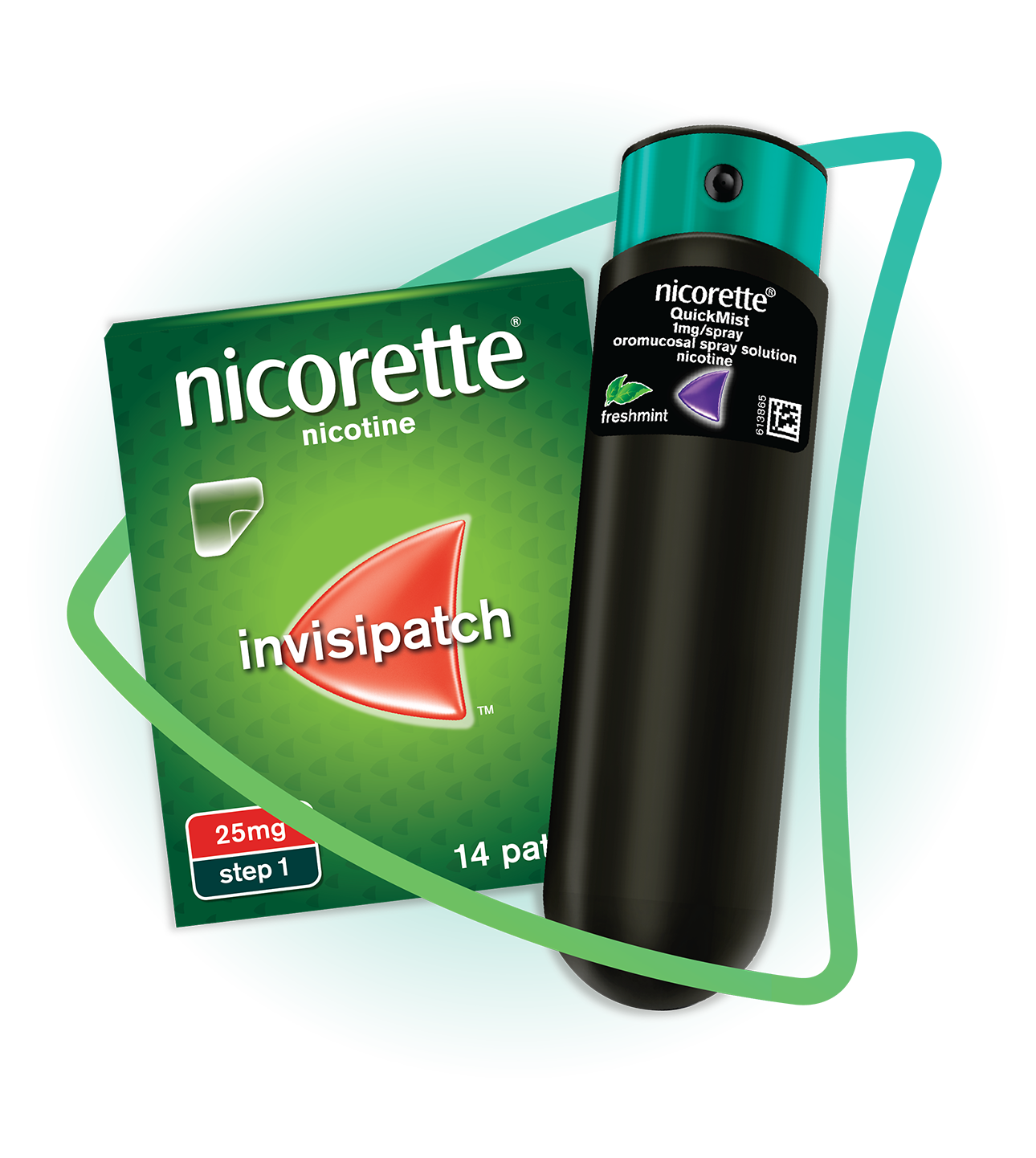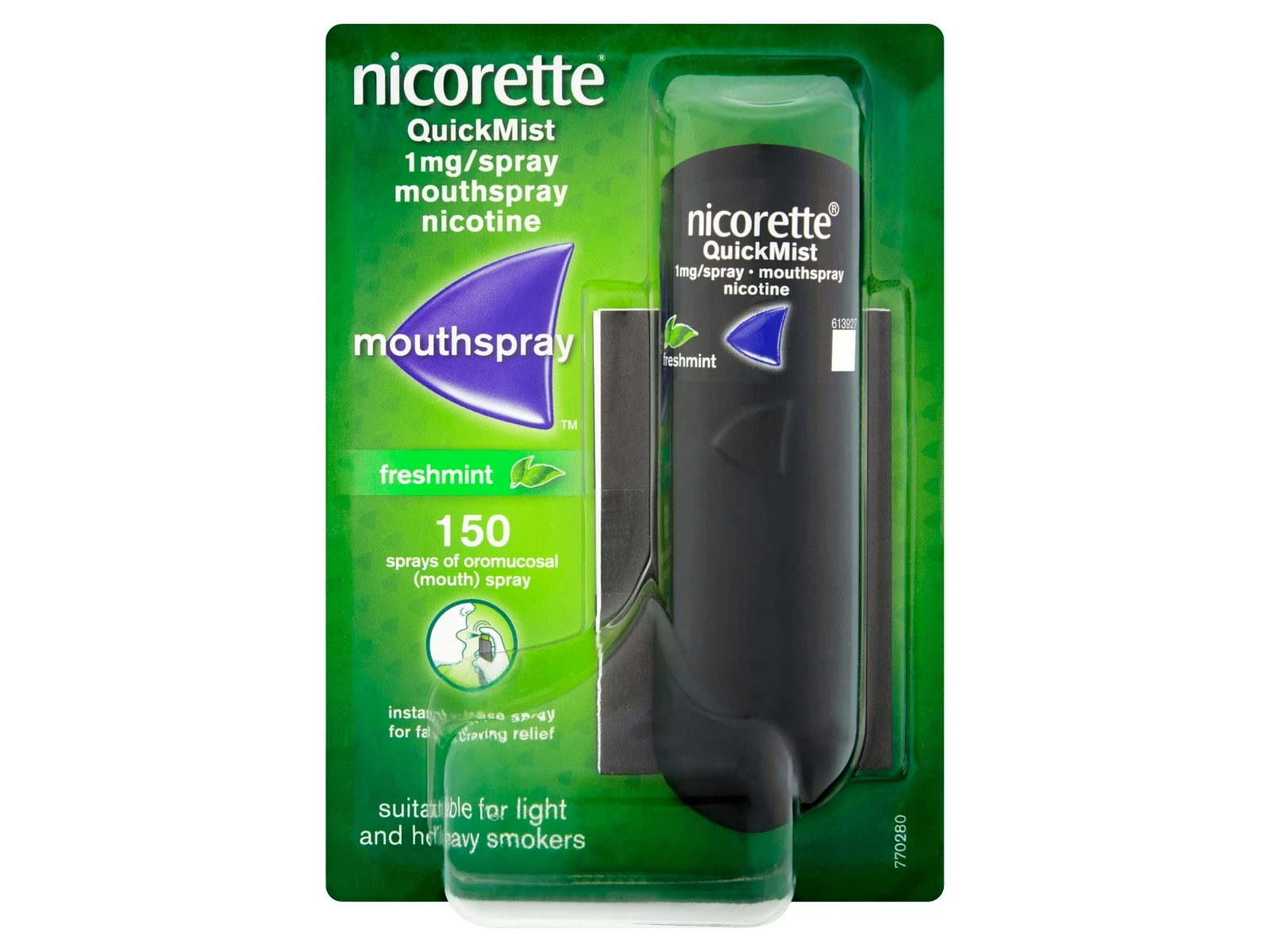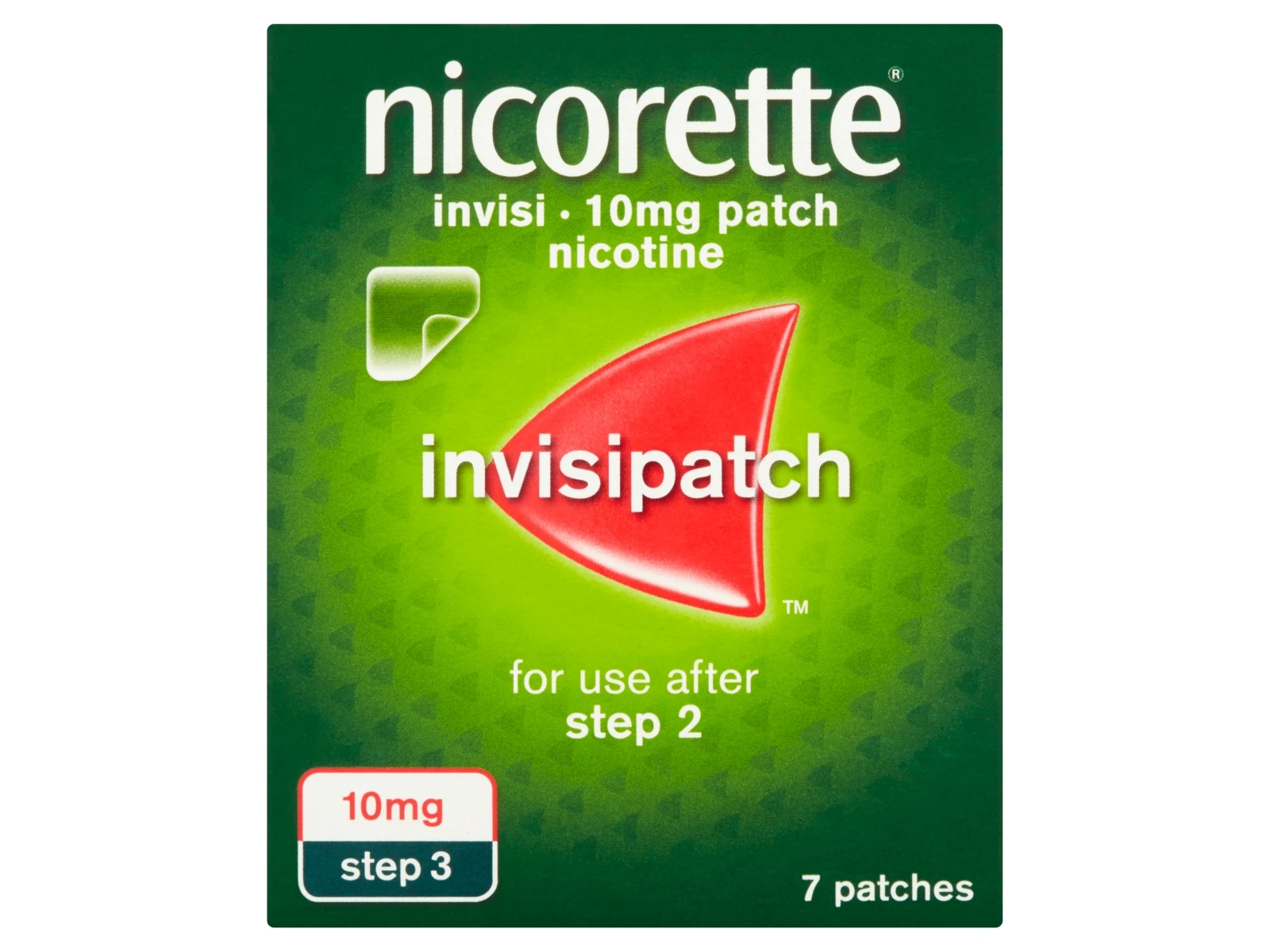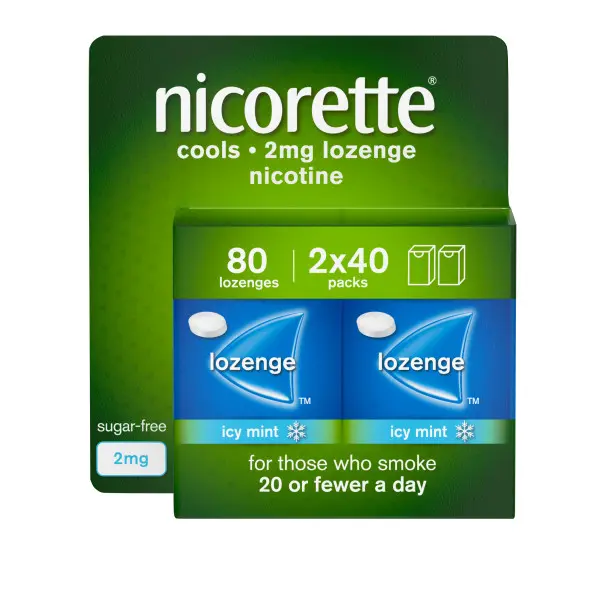Smoking and musculoskeletal pain
Quitting smoking with Nicorette® (nicotine) – nicotine replacement therapy*1
*Nicorette® is clinically proven to help your patient quit smoking

Help your patients quit smoking today
Smokers have a higher prevalance of chronic pain and greater pain intensity than non-smokers.2
Smokers are at a greater risk than non-smokers for chronic post-operative pain long-term use of opioids and other analgesics2
Smoking has negative effects on musculoskeletal function, injury, & surgical outcomes
Although the effects of nicotine on musculoskeletal function and injury are not fully understood, cigarette smoking is associated with:
Lower bone mineral density(BMD), increased fracture risk, periodontitis and alveolar bone loss3
Increased joint disease activity and poor functional outcomes3
Immune suppression, reduced cellular oxygenation, and delayed nutrient progression to injury sites, which can increase injury risk and delay healing*4
* study was conducted on meniscal injury
The relevance of cigarette smoking on musculoskeletal problems is still underestimated5.
Cigarette smoking worsens the prognosis of several orthopaedic disorders and surgical procedures5,6
Most common complications from orthopaedic surgery caused by smoking include: poor wound healing, infection and poor final outcomes of surgery5,6
Daily tobacco smokers often experience greater pain following periods of smoking abstinence7
Smoking is considered one of the factors that complicate pain management2
Since pain intensity ratings were positively correlated with the severity of nicotine withdrawal symptoms, controlling these symptoms is important not only in smoking cessation interventions but also in pain relief care2
Smokers require greater opioid doses for pain relief than non-smokers, but despite their higher doses, they show greater pain intensity scores2
Smokers will benefit from smoking cessation interventions that are tailored to account for pain amplification during early stages of quitting7
Smoking cessation as a consideration to help reduce chronic pain
A 2022 consensus statement from Japan strongly recommended smoking cessation to help improve chronic pain, based on the result of a systematic review and meta-analysis:2
Smoking cessation helps alleviate pain by preventing the aggravation of tobacco-related diseases and other pain- causing pathologies2
In smokers with chronic pain, nicotine withdrawal increases pain intensity. Therefore, to increase the likelihood of abstinence, the use of smoking cessation aids is advised vs willpower alone2
Encouraging your patients to avoid or quit smoking can reduce their risk of incurring many musculoskeletal problems9
Sufficient smoking abstinence can reduce post - operative pain
Smokers show higher acute pain intensity scores postoperatively than non smokers, and require greater opioid analgesic doses. These trends are more pronounced with higher levels of nicotine dependence2
Patients show lower post-operative acute pain scores, when starting smoking abstinence >3 weeks before surgery than when starting it immediately before surgery2
These findings underscore the need for a sufficient duration of smoking abstinence before surgery to minimise the adverse effects of smoking2
The essential role of HCPs in getting patients to stop smoking
You have the chance to help improve your patient's pain-causing conditions, their health and overall life expectancy2
Even less than 3 minutes of discussion can increase smoking cessation and abstinence rates by 40%10
85% of patients would appreciate their physician bringing up the topic of smoking cessation11
Two-thirds of smokers say they want to quit, but most try to do so unaided, which is the least effective method12
96% of smokers will fail to quit smoking with willpower alone13
How HCPs can help patients with musculoskeletal pain to stop smoking
Patients have a 3-5x increased chance of quitting with stop-smoking aids and behavioural support14,15
Pain practitioners and smoking cessation therapists could:
Develop patient awareness and education with support on smoking cessation12
Use relevant treatment protocols and counselling to help patients achieve pain alleviation and smoking cessation2
Recommend stop smoking aids like NRT or prescription medicines and provide ongoing support16
Nicorette® NRT solution to support your patients to stop smoking 1*
Nicotine Replacement Therapy (NRT) has been specifically developed to aid patients to quit smoking
NRT provides the body with therapeutic doses of nicotine through a safer, alternative method safer, alternative method to smoking and reduces withdrawal symptoms and urge to smoke (cravings)
The NRT dosing regimen provides a tapering down of pharmaceutical grade, lower dosage nicotine intake. 17,18 As the dose is tapered down, typically over a 12-week period, 19 the brain downregulates the number of nicotine receptors which reduces cravings20 and increases the chances of successful, complete nicotine cessation19.
*Nicorette® is clinically proven to help your patient quit smoking
Nicorette® is clinically proven to reduce nicotine dependency, by helping to fight smoking cravings
Click here for product information
References
Nicorette ®. Summary of Product Characteristics.
Iida H, et al. J Anesth. 2022 Dec;36(6):671-87.
Al-Bashaireh AM, et al. J Environ Public Health. 2018 Jul 11;2018.
Chapman SL, Wu LT. Epidemiol Rev. 2015;37(1).
Abate M, et al. Muscles Ligaments Tendons J. 2013 Jul 9;3(2):63-9.
American Academy of Orthopaedic Surgeons . Orthopaedic Surgery and Smoking. OrthoInfo. Available at: https:// orthoinfo.aaos.org/en/treatment/surgery-and-smoking. Last accessed: April 2024.
LaRowe LR, et al. Exp Clin Psychopharmacol. 2018;26:448–55.
Dayawa DA, American Journal of Medicine Open. November 2021. 1-6(16):100002.
American Academy of Orthopaedic Surgeons. Smoking and Musculoskeletal Health. OrthoInfo. Available at: https:// orthoinfo.aaos.org/en/staying-healthy/smoking-and-musculoskeletal-health. Last accessed: July 2024.
Fiore MC, et al. 2008 PHS Guideline. Treating tobacco use and dependence: 2008 update.
Slama KJ, et al. Family Practice 1989;6(3):203-209.
Public Health England. Health matters: stopping smoking – what works? Available at: https://www.gov.uk/government/publications/health-matters-stopping-smoking-what-works/health-matters-stopping-smoking-what-works. Last accessed April 2024.
Hughes, J.R., Keely, J. and Naud, S., 2004. Shape of the relapse curve and long-term abstinence among untreated smokers. Addiction, 99(1), pp.29 -38.
West, R. and Papadakis, S. (2019) Stop smoking services: increased chances of quitting, London; National Centre for Smoking Cessation and Training.
Sutherland G. Heart 2003; 89(suppl II): ii25–ii27.
NICE guideline NG209. Tobacco: preventing uptake, promoting quitting and treating dependence. November 2021.
Sandhu A, Hosseini SA, Saadabadi A. Nicotine Replacement Therapy. [Updated 2023 Nov 12]. In: StatPearls [Internet]. Treasure Island (FL): StatPearls Publishing; 2024 Jan.
European Pharmacopoeia (Ph. Eur.) 11th edition. Strasbourg, France: EDQM Council of Europe. Nicotine 1452 (01/2009:1452) respectively Nicotine Resinate (01/2015:1792).
Sweeney CT, et al. CNS Drugs. 2001;15(6):453–67.
Mamede, M., Ishizu, K., Ueda, M., Mukai, T., Iida, Y., Kawashima, H., Fukuyama, H., Togashi, K. and Saji, H., 2007. Temporal change in human nicotinic acetylcholine receptor after smoking cessation: 5IA SPECT study. Journal of Nuclear Medicine, 48(11), pp.1829-1835
Adverse events should be reported. Reporting forms and information can be found at https://yellowcard.mhra.gov.uk/
Adverse events should also be reported to McNeil Products Limited on freephone 00800 555 22000.
UK-NIC-2025-241046 | October 2025.




